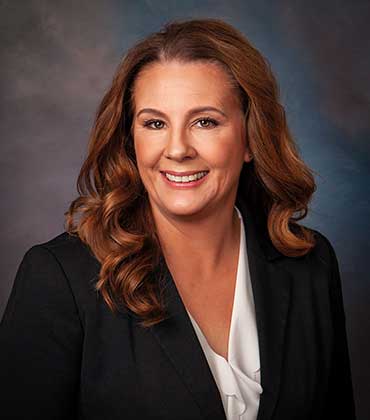THANK YOU FOR SUBSCRIBING
By Mike Wargocki, SVP of Operations, at Sunbasket
Sunbasket solving for convenience while keeping food...
By Rick Stanbridge, VP & Chief Information Officer, Marco’s Pizza
How Marco's Pizza Leaned on Technology to Succeed amid...

Expand Your Food Safety Culture
Tanja Dinic, Director of Internal Audit for Food Safety, Fortenova Grupa

 Tanja Dinic, Director of Internal Audit for Food Safety, Fortenova Grupa
Tanja Dinic, Director of Internal Audit for Food Safety, Fortenova GrupaUnquestionably, food safety is a primary focus for every food manufacturer. Food safety professionals put a lot of effort into food safety processes and procedures, meeting mandatory regulations, exceeding food safety standards, and passing food safety audits.
Food products are a sensitive category. We buy food out of primary need, out of comfort and satisfaction, and out of curiosity. Food affects our senses, but it can also affect our health. This is why the food industry must comply with quality requirements and maintain quality standards.
To minimize all the costs and efforts associated with tracking and withdrawing a non-compliant product through the food chain, lost customer sales and brand trust among consumers, established food safety culture through organization minimize risks.
Food safety culture is prescribed in the current regulation, Codex Alimentarius, food safety standards (GFSI), and one among many definitions is:
"The foundation for the successful functioning of any food hygiene system is the establishment and maintenance of a positive food safety culture that recognizes the importance of human behaviour in ensuring safe and suitable food."
Food safety culture includes shared values, beliefs and norms that influence the organization's way of thinking and behaving towards food safety. A thriving food safety culture is one in which each employee understands their specific responsibilities regarding food safety. Includes activities such as the continuous implementation of employee education related to food safety and quality, checking process compliance with the requirements of food safety standards, implementation of internal factory inspections of production facilities and the environment, management of foreign bodies in production facilities and risk analysis related to food safety such as food protection and food fraud.
Organizational safety culture could also be defined as "how people in the company behave when no one is looking".
Achieving these goals requires effective quality management, which implies continuous improvement activities at every operational level and functional area of the organization. Quality management combines the commitment, discipline and increasing effort of everyone involved in the production process and the fundamental management and control techniques, aiming to improve all processes continuously. For this, industries must be organizationally structured, with established quality policies and programs, measure customer satisfaction, and use appropriate tools and methodologies for risk assessment.
Over time, the role of food safety experts has also changed. As the industry grows, technology develops, the demands and awareness of consumers evolve, and so does the understanding of quality management. As a result, every company goes through a certain level of maturity in terms of quality management.
" Food safety culture starts at the top and flows down. A management’s attitudes, actions, and decisions set the tone for everyone else in the food chain "
It is important to highlight these stages of quality maturity that start with quality control. Product quality control is limited and focused on corrective inspection, that is, checking the uniformity of the final product by separating non-conforming products. In addition, it aims to identify defects and develop statistical tools for sampling and control, usually by a knowledgeable and dedicated team.
Quality control is essentially an assessment of the final product before it is released on the market, i.e., at the end of the production chain. Hence, it has limited potential for correcting production defects or upgrading the final product quality by focusing on the inspection aspect of quality management.
The next step of maturity item occurs with Quality Assurance.
Quality assurance can be defined as "the part of quality management focused on systematic activities and providing confidence that quality requirements will be met".
Despite the close connection and involvement in quality management, quality control and quality assurance have fundamentally different goals.
Quality assurance aims to prevent defects and nonconformities, while quality control seeks to identify weaknesses.
Quality assurance relates to broader control and prevention, ensuring standardized processes and quality in all product acquisition phases through systematic management.
This is a proactive approach aimed at a process that would eliminate defects in the product and includes development and testing.
Finally, quality management is included in the strategic scope of the organization, and this phase is called Strategic Quality Management.
It represents a vision of market-oriented management, with an eye on opportunities ahead of the competition and customer satisfaction. Inspection control of raw materials and products, laboratory control, hazard analysis and determination of root cause analysis, and audit of systems and suppliers remain fundamental QM pillars. Maturity or evolution has been achieved because the entire organization is included in the quality management vision.
Through the support of the management and ownership structure, a culture of food safety includes:
Flexibility - To anticipate system requirements and configure them in time to minimize risks.
Reporting - Employees are encouraged to report safety-related issues. The most crucial ingredient in this culture is trust.
Awareness - Like responsiveness, everyone within the system knows what they need to do as part of a more extensive system.
Education - Constant investment of everyone involved in the processes, significantly based on previous mistakes. The enemy of every organization is "business as usual". Even after a problem has been identified and corrective action initiated, day-to-day operations are not uncommon to slowly return to the old routine.
Honesty – People are more likely to report problems if they know they won't be criticized in a prejudicial way because of their role.
Food safety culture starts at the top and flows down. A management's attitudes, actions, and decisions set the tone for everyone else in the food chain. Clear and consistent messaging is essential, but leading by example is even more important.
Responsible companies regularly assess their culture and take measures to improve it. Their organizational culture goals are regularly updated to ensure alignment with their company's vision, values, and strategy.
Read Also















